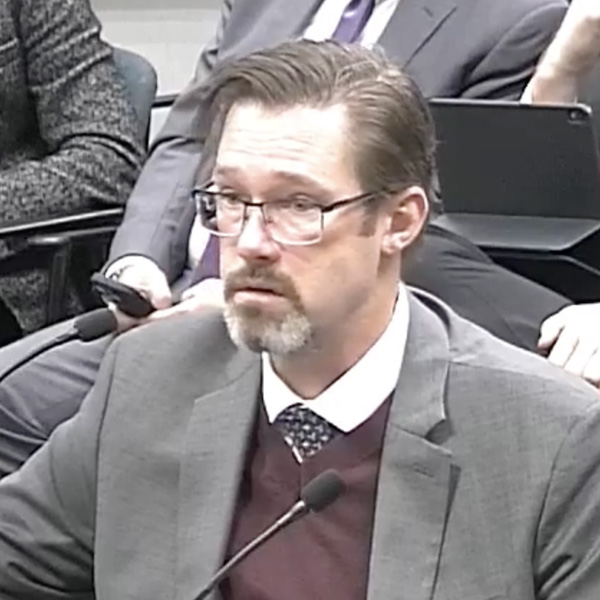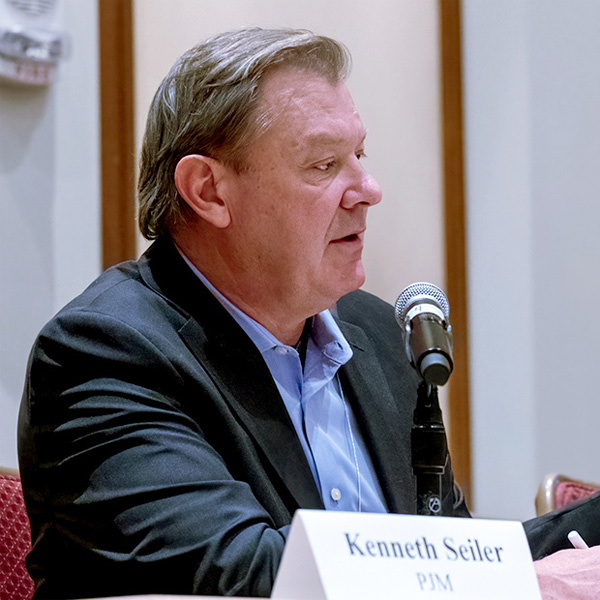Arizona Public Service has filed a 15-year resource plan that lays out a strategy for meeting increasing demand and replacing capacity lost from its coal plant exit.
The plan calls for investment in “hydrogen-capable” natural gas generation, which will serve as a backup for wind and solar resources and maintain reliability.
The Palo Verde nuclear plant, which APS co-owns and operates, also will help manage costs and strengthen reliability, APS said.
Renewables will grow from 16% of APS’ energy mix to 43% in 2038, according to the integrated resource plan filed last week with the Arizona Corporation Commission (ACC).
“The immediate path ahead is clear: continued investment in affordable renewable technologies, utility-scale battery energy storage and additional hydrogen-capable natural gas facilities to provide necessary peaking and overnight load support,” APS said in its IRP.
Now that the IRP has been filed, stakeholders will have an opportunity to comment and APS will have a chance to respond before the ACC reviews the plan.
Four Corners Exit
In the plan, APS promises to exit by 2031 from the coal-fired Four Corners plant, which it operates and partly owns. APS plans to no longer have ownership in the facility by 2031, the company said in an email.
Environmental groups have called for an earlier exit from Four Corners, pointing to projections of significant cost savings from a 2028 closure.
But APS said an earlier exit creates “too significant a risk to customers at this time,” given obstacles to new resource development.
“APS does not support the early exit from Four Corners due to the grid reliability risks associated with the transition to newer, nascent technologies and increasingly limited excess capacity across the Western U.S. region,” the plan said.
The company said it will continue to study the feasibility of leaving Four Corners before 2031 as conditions change.
The IRP also has been criticized for its reliance on fossil fuels. Although coal disappears from APS’ portfolio after 2031, gas and oil hover at around 20% of the energy mix through 2038.
Alex Routhier, the Arizona clean energy manager at Western Resource Advocates, said APS must do more to speed its clean energy transition.
“We commend APS’ pledge to double its renewable energy resources by 2030, but its plan contains significant flaws,” Routhier said in a statement.
WRA said utilities must reduce their carbon emissions 80% from 2005 baseline levels by 2030 to be aligned with science-based climate goals.
APS projects its greenhouse gas emissions will fall from 9.3 million metric tons in 2023 to 6.7 million metric tons in 2038. Emissions in 2038 will be reduced 60% compared to 2005 baseline levels.
APS has pledged to be 100% carbon-free by 2050.
Growth Forecast
APS projects its customers will need about 14,820 MW of electricity in 2038, compared with the company’s 9,400 MW of total energy resources this year.
Contributing to the expected load growth are data centers and large industrial customers, which are attracted by the dry climate and low risk of natural disasters, APS said. Other factors are a growing population and electric vehicle adoption: APS expects more than 1 million EVs in its service territory by 2037.
Increased demand is projected to be 12,997 GWh for new data centers, 3,406 GWh for EVs and 657 GWh for residential customers.
To help meet the growing demand, APS plans to add more than 6,000 MW of solar and wind power, coupled with battery storage, by 2027.
The plan also calls for natural gas peaking resources, which could be built at existing coal plants, saving money by reusing existing infrastructure.
APS is planning about 1,800 MW of additional natural gas resources through 2038, partly offset by the retirement of around 300 MW of aging facilities.
Battery Storage, Microgrids
APS said it plans to invest heavily in battery storage, which will allow it to take advantage of low-priced excess solar generation from throughout the region. At times, APS said, market participants will even pay APS to take excess solar energy.
Still, the company said it’s planning a “responsible integration of this nascent technology” and is capping battery storage at 3 GW through 2027.
“APS will continually evaluate this cap as more industry experience is gained,” the IRP stated.
Microgrids are another strategy in the IRP. They’re expected to provide about 800 MW of capacity by 2038.
APS said it could partner on microgrids with large customers, such as data centers or factories.
“Since utility-integrated microgrids are dispatchable, they provide resource adequacy critical for reliability and resiliency,” APS said.
But if customers decide not to partner with APS on microgrids, the company likely would seek more natural gas resources.
Western Market Impacts
APS joined CAISO’s Western Energy Imbalance Market (WEIM) in 2016, a move that so far has saved $375 million. APS also has been involved in development of CAISO’s Extended Day-Ahead Market (EDAM) and SPP’s competing Markets+.
“The creation of a day-ahead market can enable additional benefits for customers, and it is critical that these markets have independent governance and that all participating entities operate on an equal footing,” APS said.
The company said it expects to commit to one of the day-ahead programs after FERC approves tariffs for each.
For now, APS isn’t including day-ahead market participation in the IRP’s quantitative analysis.
“As potential day-ahead market structures become more certain, APS will be able to estimate the cost impacts in future IRPs from different programs and options,” the company said.


